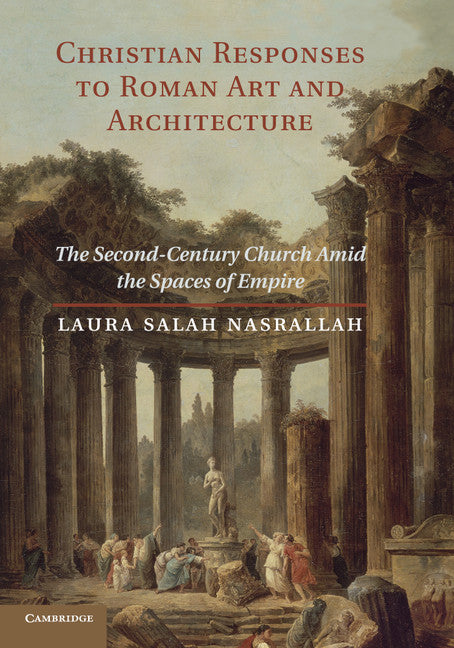Freshly Printed - allow 8 days lead
Couldn't load pickup availability
Christian Responses to Roman Art and Architecture
The Second-Century Church amid the Spaces of Empire
Laura Nasrallah argues that early Christian literature is best understood when read alongside the archaeological remains of Roman antiquity.
Laura Salah Nasrallah (Author)
9781107644991, Cambridge University Press
Paperback / softback, published 15 August 2011
352 pages, 31 b/w illus. 1 map
25.4 x 17.8 x 1.9 cm, 0.61 kg
'This excellent book is a delight to read, and should garner the avid attention of anyone interested in early Christianity and its engagement with Roman culture, or in the spatial and material readings of ancient texts more generally. It is hard to do justice to the outstanding quality of the work … or the insights that dot every page. The mastery of the secondary literature both for the ancient texts and for the archaeological examples is enviable in its breadth and depth, as well as its theoretical sophistication. Also deserving of note (and emulation!) is Nasrallah's generous and engaged treatment of her colleagues' work, and her lively, fluid style … an unqualified success at its goal, to 'stimulate the reader's imagination to question the prescriptive rhetoric of elite sources, to think spatially, and to look to archaeological materials as well as literary'.' Journal of the American Academy of Religion
Laura Nasrallah argues that early Christian literature addressed to Greeks and Romans is best understood when read in tandem with the archaeological remains of Roman antiquity. She examines second-century Christianity by looking at the world in which Christians 'lived and moved and had their being'. Early Christians were not divorced from the materiality of the world, nor did they always remain distant from the Greek culture of the time or the rhetoric of Roman power. Nasrallah shows how early Christians took up themes of justice, piety and even the question of whether humans could be gods. They did so in the midst of sculptures that conveyed visually that humans could be gods, monumental architecture that made claims about the justice and piety of the Roman imperial family, and ideas of geography that placed Greek or Roman ethnicity at the center of the known world.
Introduction
Part I. Framing the Question, Framing the World: 1. What is an apology? Christian apologies and the so-called second sophistic
2. What is the space of the Roman Empire? Mapping, bodies, and knowledge in the Roman World
Part II. Into the Cities: 3. What informs the geographical imagination? The acts of the Apostles and Greek cities under Rome
4. What is justice? What is piety? What is paideia? Justin, the forum of Trajan in Rome, and a crisis of mim?sis
Part III. Human Bodies and the Image(s) of God(s): 5. How do you know God? Athenagoras on names and images
6. What do we learn when we look? (Part I) Images, desire, and Tatian's To the Greeks
7. What do we learn when we look? (Part II) Aphrodite and Clement of Alexandria
Epilogue.
Subject Areas: Church history [HRCC2], History of architecture [AMX], History of art: ancient & classical art,BCE to c 500 CE [ACG]


